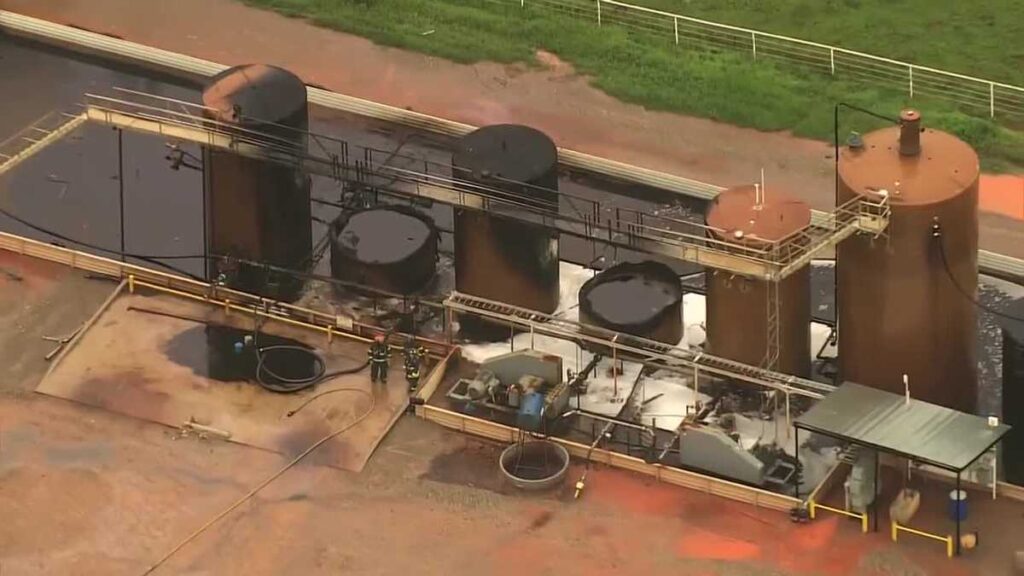The recent devastating tank battery fire at an oil well in Purcell, Oklahoma, serves as a critical reminder of the ever-present dangers in the energy sector. While the immediate aftermath focuses on the damage and containment efforts, incidents like this highlight the need for robust safety measures, particularly against lightning strikes, a significant ignition source in such environments. A comprehensive lightning risk assessment is crucial for identifying vulnerabilities.
The reports detailed a large tank battery fire where lightning ignited multiple storage tanks, the blaze sending black smoke plumes across the sky and demanding a rapid response from numerous fire departments. Thankfully, no injuries were reported, a crucial positive in a concerning situation. The investigation into the fire’s cause is ongoing, but the very likely role of lightning cannot be overlooked. Effective lightning risk management strategies are essential to prevent similar incidents.
For the energy sector, while operational contexts may differ, the fundamental hazards associated with hydrocarbon storage and processing remain. Saltwater storage tank batteries, vital in oil well operations, inherently handle flammable materials and explosive gases. This incident underscores the critical importance of comprehensive safety protocols, including advanced lightning protection system implementation.
The Oklahoma fire underscores the critical need for:
- Advanced Lightning Protection: Facilities storing flammable materials are highly vulnerable to lightning strikes. Charge Dissipation Terminals (CDT) offer a superior alternative to traditional lightning rods. CDTs work by preventing lightning strikes from occurring in the first place, rather than simply trying to redirect them. This proactive approach significantly reduces the risk of ignition and fire.
- Comprehensive Grounding Systems: Proper grounding is essential to safely dissipate any electrical charges, including those from lightning. A well-designed grounding system minimizes the risk of sparks and electrical faults that could ignite flammable materials
- Regular Inspections and Maintenance: Routine inspections of lightning protection system components, grounding systems, and all electrical equipment are vital. This ensures that all components are functioning correctly and that potential issues are identified and addressed before they lead to a catastrophic event.
- Advanced Monitoring Technologies: Implementing real-time monitoring systems, including weather monitoring and lightning detection, can provide early warnings of potential lightning threats, allowing for proactive lightning safety measures to be taken.
- Robust Emergency Response Plans: In the event of a fire, a well-defined and regularly practiced emergency response plan is crucial. This includes clear communication channels, evacuation procedures, readily available firefighting equipment, and trained personnel. Collaboration with local emergency services is also essential. Lightning mitigation strategies should be a core part of such plans.
LYTECH is committed to providing innovative technology solutions to enhance safety, improve efficiency, and minimize the environmental impact within the energy industry. We specialize in advanced lightning protection systems, including Charge Dissipation Terminals, designed to protect critical infrastructure from the devastating effects of lightning strikes. By learning from incidents like the one in Oklahoma and prioritizing proactive safety measures, we can work towards a future where such events are increasingly rare.
Let this unfortunate incident serve as a renewed call to action for all energy sector stakeholders to prioritize safety and invest in advanced lightning protection technologies and lightning risk management practices. The lessons learned thousands of miles away can, and must, inform our practices here at home.
Contact LYTECH to learn more about best practices for protecting your infrastructure and our Charge Dissipation Technology.

